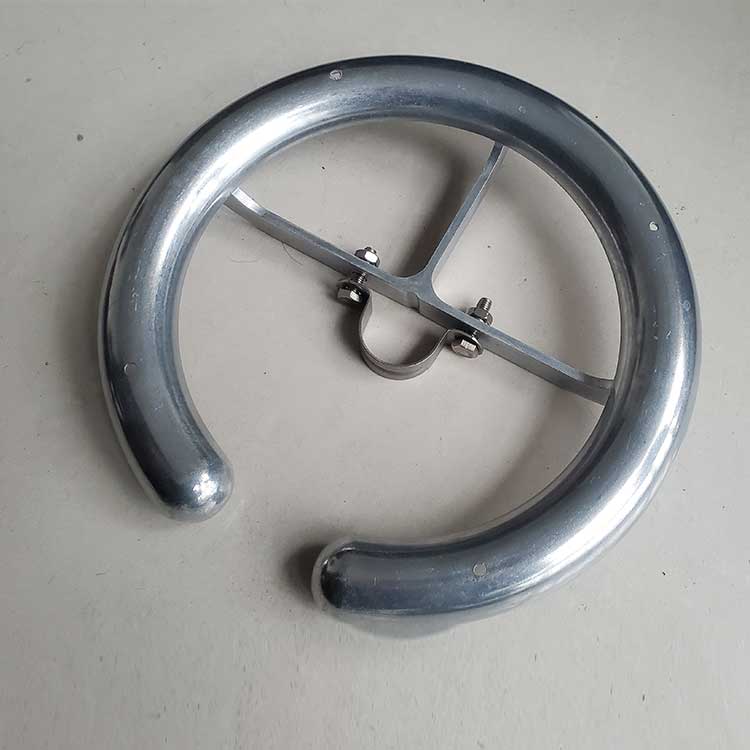
A corona ring is a device used to control the formation of corona discharge around high voltage conductors. It is also known as an anti-corona ring or a grading ring. It is a toroidal shaped metallic ring which connect at the end of insulator strings. Corona discharge is an issue with high voltage power lines that cause power loss. Corona discharge occurs when the electric field strength around a conductor exceeds the breakdown strength of air. This causes ionization of the air molecules and the production of a visible glow around the conductor. Corona discharge can lead to power loss, audible noises and even damage to equipment. Corona ring works by distributing the electric field around the conductor to reduce the localized areas. This helps to mitigate the negative effects associated with corona discharge. This is to improve the efficiency and reliability of the electrical system.
Features of corona ring
Corona rings has various features that make them effective in controlling corona discharge. It also helps to enhance the performance of high voltage systems. They have designs to mitigate corona discharge and improve the performance and reliability. The following are the various features of the corona ring.
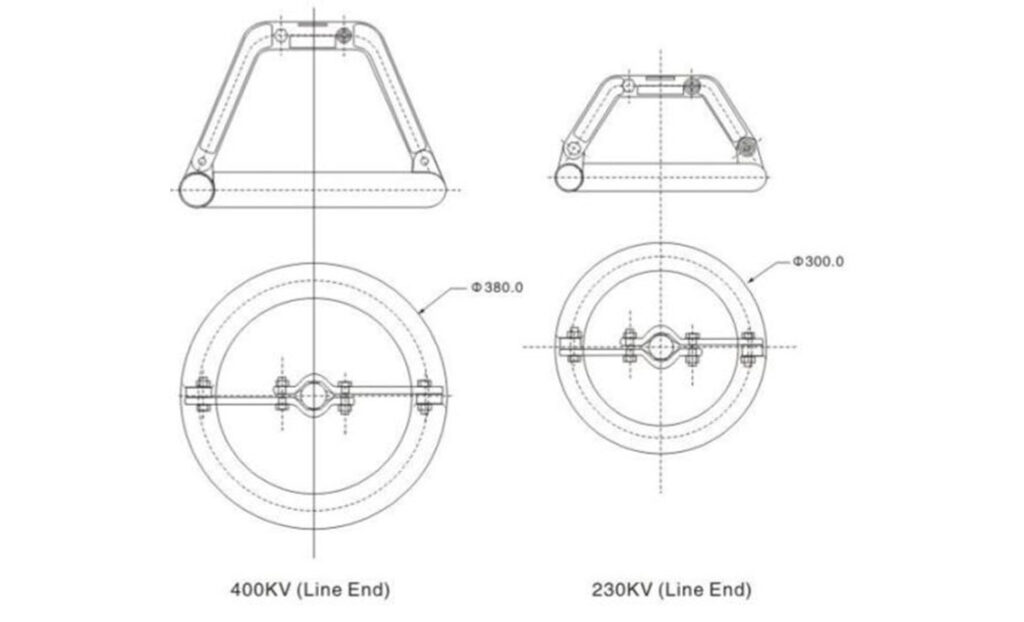
- Material composition – the rings are from materials with high electrical conductivity and mechanical strength. these materials include aluminum, copper or stainless steel. They also ensure durability and efficient conduction of electrical charges.
- Smooth surface – the surface of corona rings has coatings to ensure smoothness. The smoothness helps to reduce localized electric field gradients. This can contribute to corona discharge.
- Size and dimensions – the dimensions of the corona ring depend on the voltage level and specific requirements of electrical systems. Proper sizing ensures optimal performance in corona discharge control.
- Corrosion resistance – the rings face harsh environmental conditions. They thus need coatings to enhance corrosion resistance.
- Shape and design – the rings come in various designs and shapes for specific applications. They may be circular, rectangular or custom shapes. The shape and design are to distribute the electric field around the conductor.
- Mounting mechanism – the rings have designs that allow easy mounting on to the ends of the conductors or insulators. They may have features such as threaded holes, clamps or other mechanisms for secure attachment.
- Aesthetic consideration – corona rings may have aesthetic designs to complement the appearance of the structure.
What is corona and its characteristics
Corona discharge is a phenomenon that occurs in high voltage electrical systems. This is when the electric field strength around the conductor exceeds the breakdown strength of air. This leads to ionization of air molecules and the formation of a visible discharge or glow around the conductor. The following are the characteristics of corona discharge.
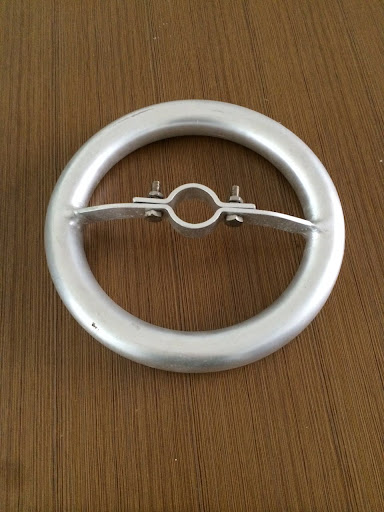
- Formation – corona discharge occurs when the electric field strength at the surface of a conductor exceeds a critical threshold. This causes the air molecules surrounding the conductor to ionize. Ionization process creates a conductive path through the air. This allows current flow and results in the formation of a luminous discharge.
- Audible noise – the discharge often generates audible noises which manifest as crackling sounds. The intensity varies depending on the size of the electric field.
- Equipment damage – discharge can cause damage to equipment in high voltage systems. The intense electric field gradients can lead to localized heating, erosion of conductive surface and insulation breakdown.
- Visible glow – the ionization of air molecules during corona discharge produces visible glow around the conductors. This glow can range from blueish-purple to reddish orange depending on composition of the conductor and voltage level.
- Energy loss – corona discharge results in energy loss within the electrical system. Energy loss can reduce the efficient of the system and lead to decreased transmission capacity.
- Environmental impact – the discharge contributes to ozone generation in the atmosphere. Ozone is a pollutant that bring effects on human health and the environment.
Purpose of corona ring
The main purpose of the corona ring is to control and mitigate corona discharge in high voltage electrical systems. They help to control corona discharge, reduce energy losses and protect equipment. Additionally, it is important to consult with industry experts for guidance on the best corona rings for your specific needs. The following are the main reasons for using corona rings.
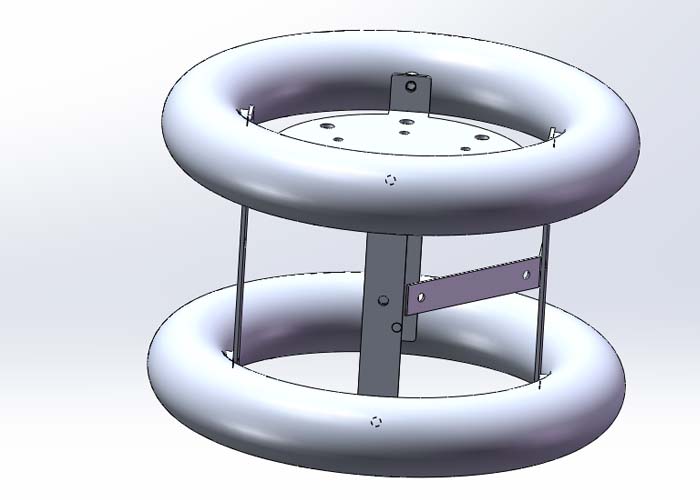
- Cut energy loss – corona discharge leads to energy loss within the electrical system. corona rings control corona discharge to reduce energy losses and improve the efficiency of the system.
- Enhance insulation performance – the rings also enhance the performance of insulation systems. Corona rings help to maintain the integrity of the insulation materials and prevent premature aging.
- Reduce corona discharge – this is the main purpose of the corona ring. Corona discharge occurs when the electric field strength around the conductor exceeds the breakdown strength of air. The rings distribute the electric field to reduce the localized areas of high electric field strength.
- Prevent equipment damage – the intense electric field gradients related to corona discharge can lead to localized heating, erosion and conductive surfaces. The rings help to mitigate the effects and protect the equipment.
- Ensure safety and reliability – corona rings help prevent equipment failures, reduce the risk of electrical fires and other accidents. Controlling corona discharge contributes to the safety and reliability of electrical systems.
Materials used in the construction of corona rings
The selection of material for corona ring depends on factors such as electrical conductivity requirements and mechanical strength. manufacturers choose materials that balance between performance, reliability and cost effectiveness. This is to ensure proper performance and longevity of the corona rings in high voltage systems. The materials should offer electrical conductivity and durability. Also, it is advisable to consult with professionals for the best material for your specific application. The following are the common materials used in the construction of corona rings.
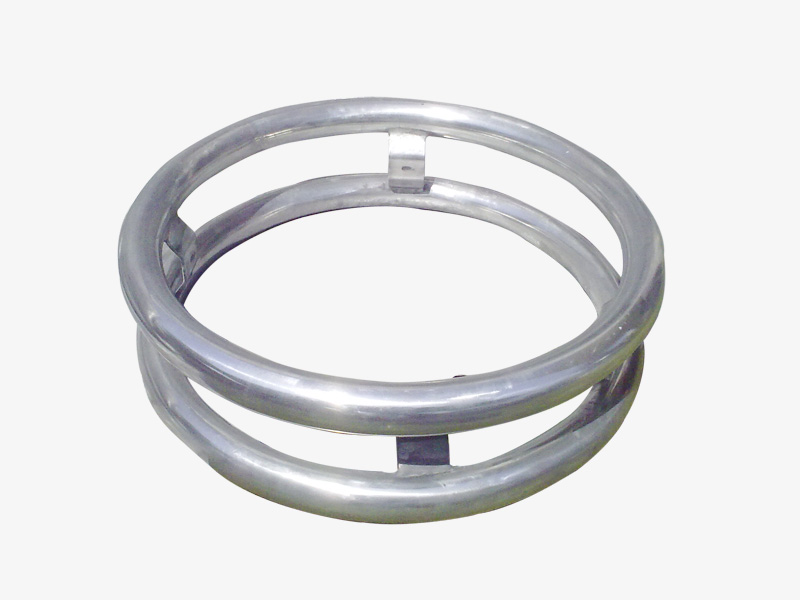
- Copper – this has superior electrical conductivity and mechanical properties. It provides best performance in electrical conduction and durability.
- Brass – brass provides a balance of corrosion resistance and electrical conductivity. It offers good conductivity, machinability and resistance to corrosion.
- Silver-plated copper – corona rings with this material combine the conductivity of copper with enhanced corrosion resistance of silver. This provides electrical performance and durability. This makes them suitable for applications where reliability is essential.
- Aluminum – this is a popular choice for its excellent electrical conductivity, lightweight nature and resistance to corrosion. It is easy to fabricate and offers good mechanical strength which is suitable for various high voltage applications.
- Stainless steel – this offers excellent mechanical strength, resistance to moisture and chemicals. It makes them suitable for outdoor installations and harsh operating conditions.
- Composite materials – this includes materials such as fiberglass-reinforced plastics. These materials provide high strength-to-weight ratio, resistance to corrosion and customizable properties
Common types of corona rings
The corona ring is available in a variety of forms and designs, each with its own arrangement. Each design helps to meet the application’s specific requirements. A variety of criteria influence the selection of the corona ring. They include voltage level, setup and corona-specific problems. Each style of corona ring provides unique benefits and strategies for reducing corona discharge and its impacts. The following are the most prevalent types of corona rings.
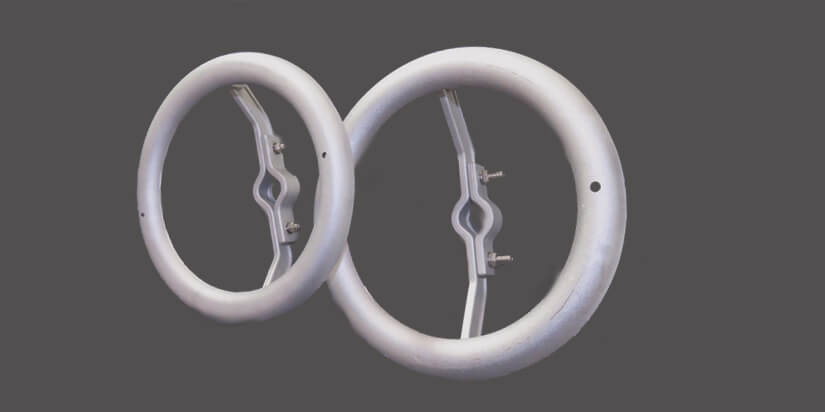
- Single corona rings – these are the most common corona rings. They have a ring of metal that attaches around the conductor. Its purpose is to equalize the electric field around the conductor to prevent corona discharge.
- Flat disc corona ring – this is a flat, circular ring that installs vertically to the axis of the conductor. This creates a uniform electric field distribution.
- Suspension corona rings – these rings suspend vertically below the high-voltage conductor. This is to maintain a uniform electric field distribution.
- Double corona rings – these have two rings instead of one. The inner ring is smaller than the outer ring. They work in applications where there is a higher risk of corona discharge.
- Bundled conductor corona ring – these are two or more corona rings bundled together to help distribute the electric field among the individual conductors.
- Semicylindrical corona rings – these have a semicylindrical shape usually placed around conductors to help maintain the electrical field.
- Multi-layer corona rings – these consists of many concentric layers of conductive materials designed to address higher voltage applications.
- Interphase spacer rings – these rings install between phases of a transmission line to control the electric field between adjacent phases. This is to reduce the potential for corona discharge between them.
- Capacitor type corona ring – these help to introduce capacitance between the conductor and the corona ring.
Frequently asked questions
A corona ring is a device used in electrical engineering to control corona discharge in high voltage electrical systems.
Corona rings serve several purposes like reducing corona discharge, minimizing energy losses and enhancing insulation performance. They also ensure safety and reliability in high voltage electrical systems.
Corona rings control corona discharge by distributing the electric field evenly around the conductor. This reduces localized areas of high electric field strength that can lead to corona discharge.
